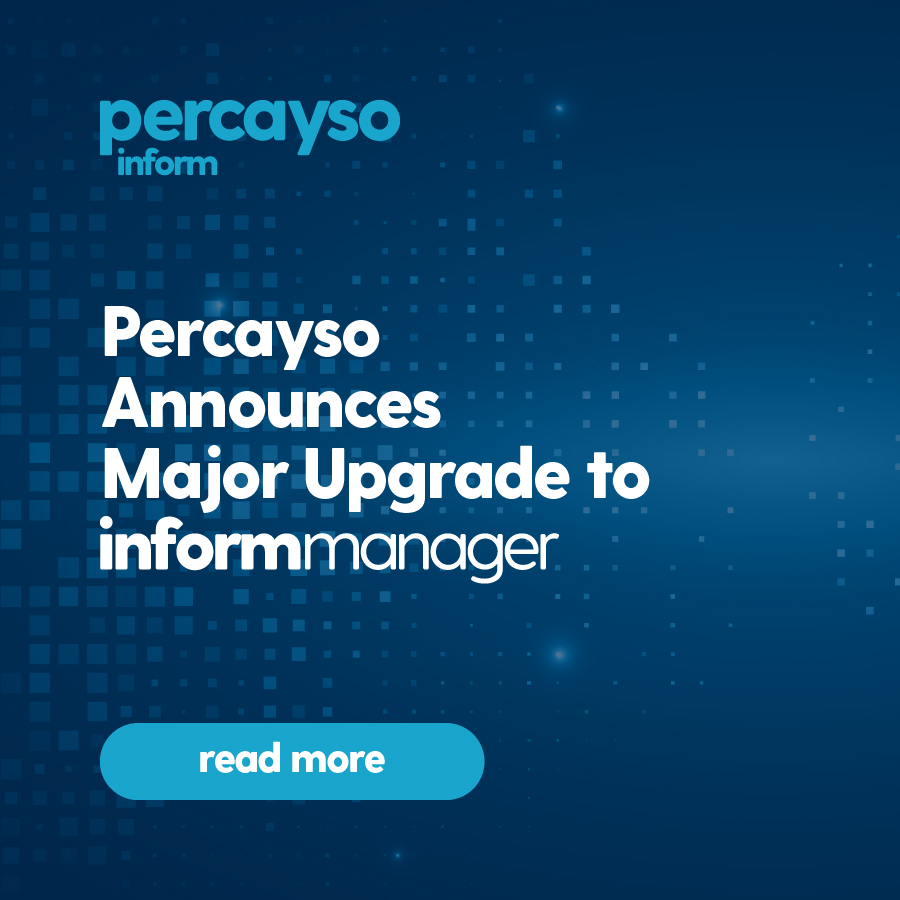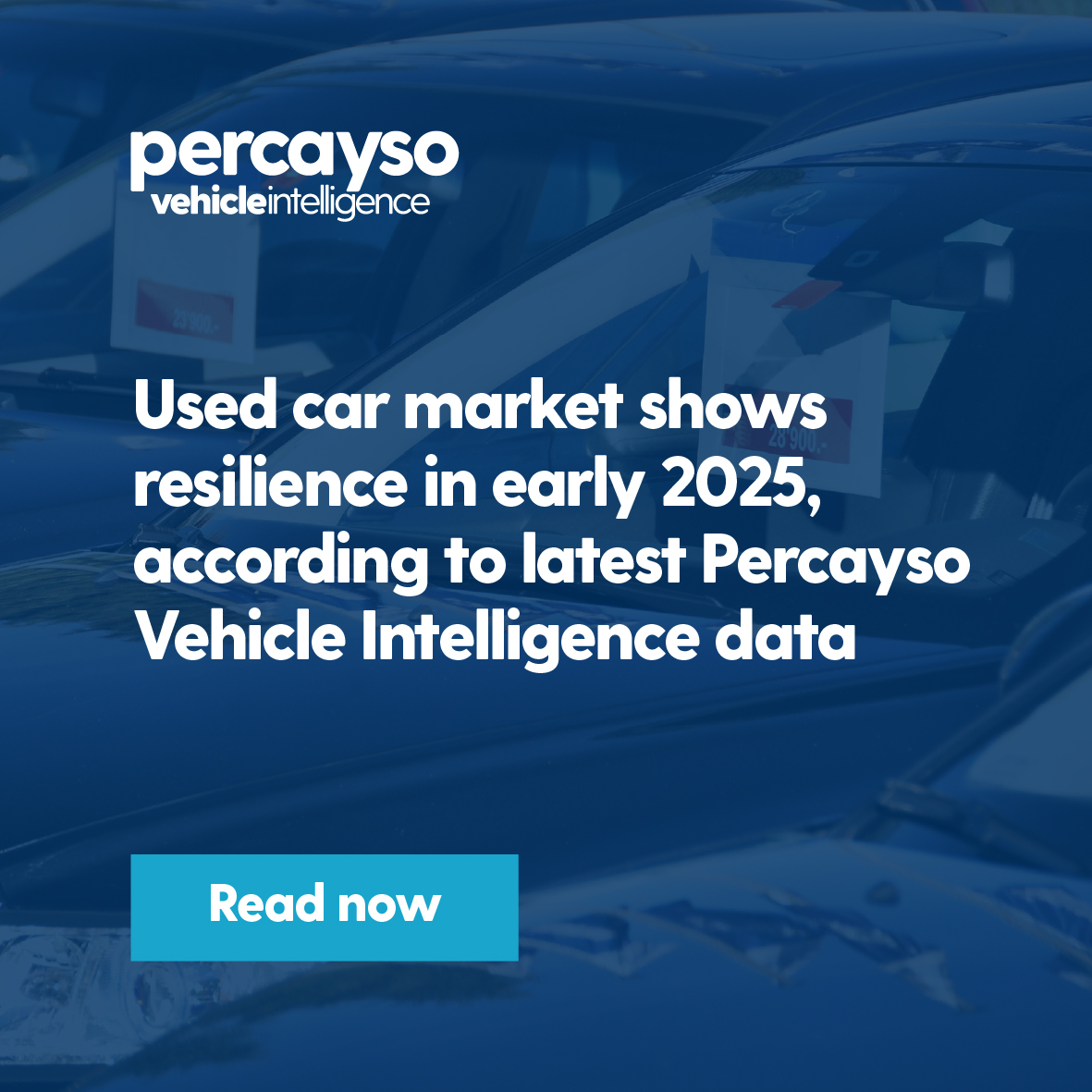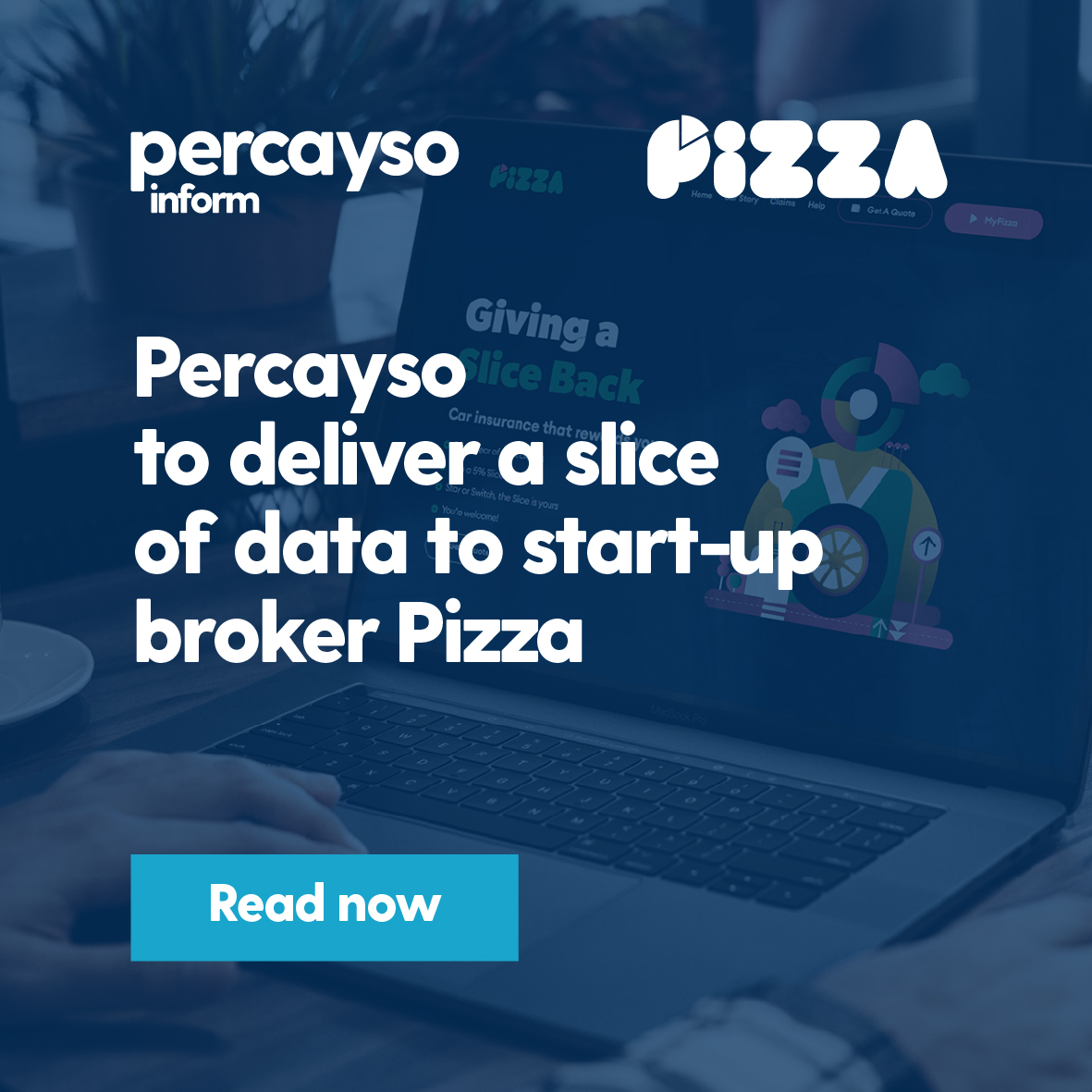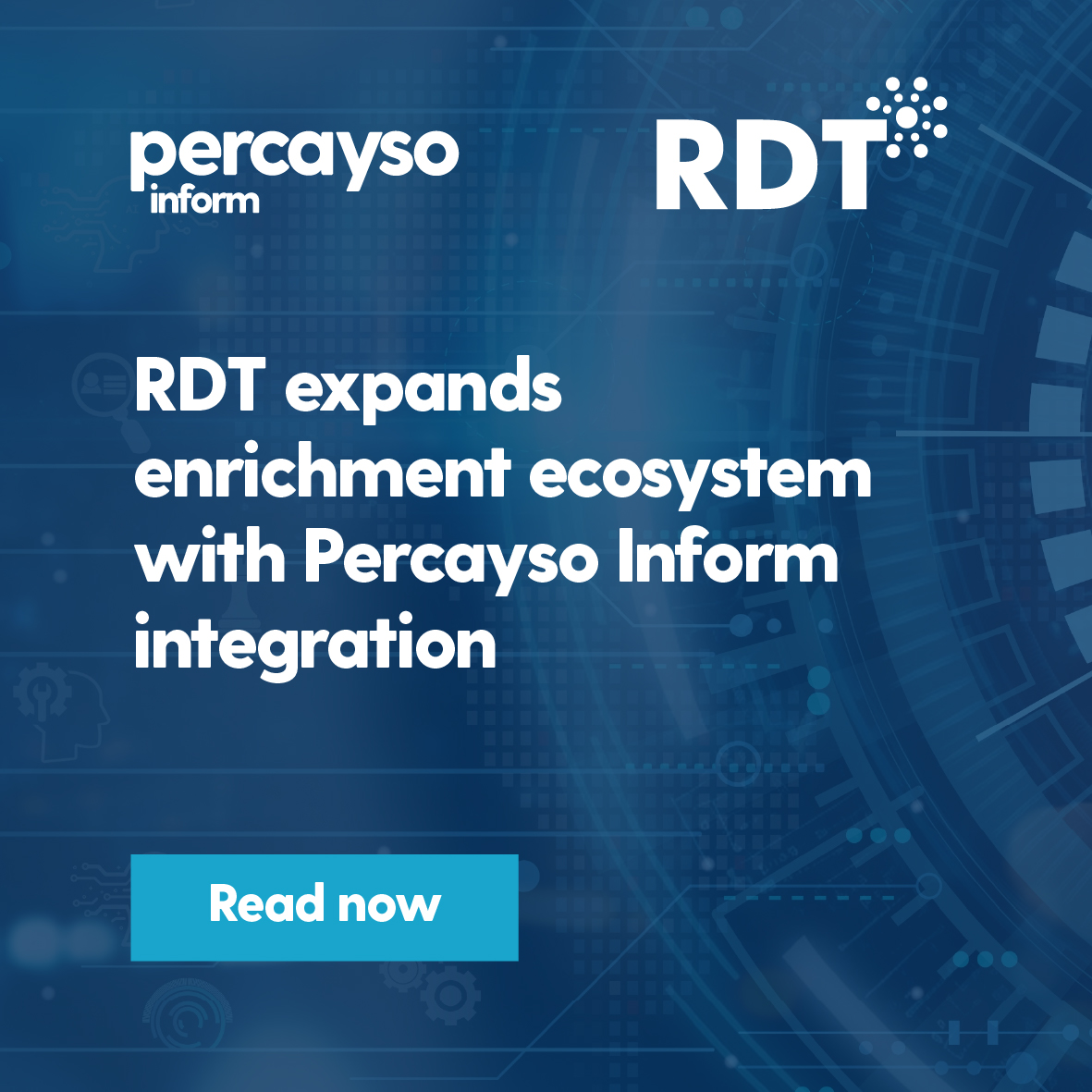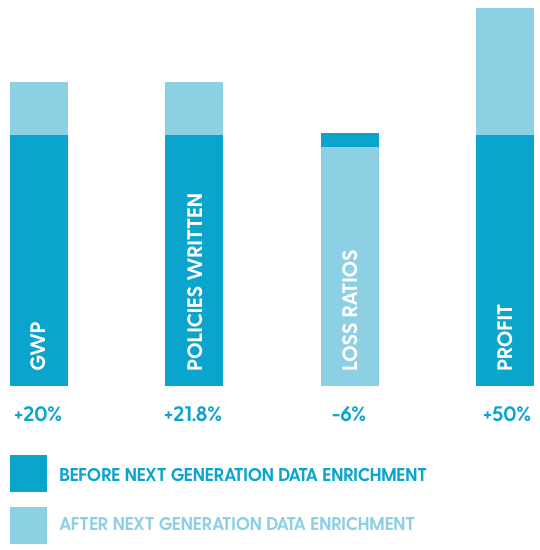Insurance Edge travelled to Nottingham, to meet Richard Tomlinson, MD at Percayso Inform. They’re going full throttle on data insights and analytics for insurers and brokers. Everyone in the industry knows that more data is out there than ever before – but how do you make sense of it before you quote?
IE: Tell us a bit about how Percayso Inform got going.
RT: It kind of comes down to our founder Simon James, like me he had a background in credit reference bureau, data and analytics. It started from the idea that credit bureau information could be very useful for insurers and brokers. Simon started a company about 12 years ago called Insurance Initiatives, which identified key datasets and leveraged them, in claims, anti-fraud etc. We could see that this kind of extra data could give insurers an edge when quoting.
Then there’s the bigger question of how you plug that dataset of information within a quote process. You need to provide the data sub second at quote, so that processing of data has to be very fast, and accurate, as it pulls together the information from various sources before pricing the risk.
After Simon sold that business to LexisNexis he felt that there was more to do, new tech emerging, some exciting developments in data analytics, especially real-time and predictive data as well as GDPR and the idea that a consumer owns their data and, with consent, can allow companies to access it on their terms. Percayso is also looking at taking this layered data approach international, which means adapting to local consent and privacy laws etc.
By harnessing the very latest techniques in data science and machine learning, allied with new powerful datasets, we believe that Percayso Inform can deliver up to an eight-fold improvement in predictive capability when compared to the standard public bureau-based methods currently available to insurers and brokers.
IE: It is the case that consumers want a reward for giving up their data?
RT: I think it is only right that consumers are rewarded for allowing their data to be used – this may be in the form of an insurance discount or a just a more appropriate product but there needs to be a rebalancing of the power dynamics between consumers and the businesses that use their data…
IE: The more you know about a customer, from a variety of sources the better. Credit history, addresses, previous or extra vehicles owned – all these things are good to know.
RT: Yes there’s device data, vehicle history, extra driver info, technology within the car, plus you want to know a stack of stuff about the driver too of course.
IE: As the car market moves towards leasing and renting, rather than owning vehicles, you need to know more. Gap insurance, finance payments, is there a servicing plan attached too? From a broker point of view, if you get it wrong and quote incorrectly, even by a few pounds then you will lose out.
RT: Yes and it’s a poor customer experience if that happens because the broker has to then email or phone and say we made an error so it’s actually £450, not £350. You don’t want that to happen – but if you’re currently using standard public bureau data, then you’re getting a relatively limited picture and one that is often out of date. We would say that you need the fullest data picture all the way through the process; quote, admin, claims, renewal – because circumstances can change and as an insurer you really need to know what has changed.
Could be a job, house move, extra named driver, new mortgage and so as an insurer you really want to be aware of those landmark changes. You can only get that consistent and 360 degree view of a customer by harnessing the power of public, full and multi bureau datasets.
IE; Let’s mention mid-term adjustments, because for years these admin updates have been costing consumers from £20 to as much as £75. Can richer data processing bring those MTA costs down, or help them vanish completely, are we 80% there with automation?
RT; I would say we are about 90% there as regards automation. Insurers need to justify costs, so if you’re still doing something in a call centre manually fair enough, but if that process is totally automated, then MTA costs could well disappear.
Things like full credit bureau history, from multiple sources, is a much richer dataset and so that has a big impact on risk. One thing Percayso Inform wants to do is get people talking about consent, and how that can help them get cheaper insurance. So long as everything is fully transparent, then people will be happier with their insurers, because they’ll see better value in the proposition.
IE: Talking with Sam White at BIBA last year, we were comparing car insurance now to Build-A-Bear. Consumers can cherry pick which features they want, some PAYG cover for one person in the household, Fully Comp for another, add legal, PI cover etc. Is all this new data science tech going to allow drivers to select their levels of cover, in real time?
RT; This is what we have to an extent, individual quotes are there now. But insurers have to decide how far down the line of personalisation they want to go.
IE; So could we be approaching the end of the Fully Comp or TPF&T options being the default setting? A driver could login to the car by smartphone connection and then the third party, PI, legal cover actually starts at the moment the engine is switched on?
RT: I think there’s technology that can make that happen now, but some insurers might feel they don’t want to be the first to offer more flexible, or complicated policies that are kind of switchable. The industry is price sensitive in this sector, so if you’re doing something new and then the FCA feel that you’re overcharging consumers for that Build-a-Bear policy, then that becomes a problem.
IE; Maybe everyone has to step up another two rungs on the ladder, and offer more flexibility in motor policies in one leap forward?
RT; You’ve got consumers switching every year, based on price, and you have others who want a long term relationship and are happier getting something tailored for them. It’s also possible that the richer data offers insurers and brokers a deeper understanding of the customer. Their home, life and health plan cover, gadget insurance, bikes – everything. Then add the multi-source credit bureau analysis and even open banking data on top of that and then you truly have an accurate pricing system.
IE: So anyone using Percayso is basically cross-checking, all the time?
RT; Yes, but more than that, we work with our clients to ask what are they trying to achieve? Are they trying to improve their renewal rates, cross-sell products, decrease the cancellations within the 30 days of a policy going live. We are helping them understand how machine learning can translate the raw data into something useful to them, not just in general.
IE; So an insurer could do their own A/B testing by batch? They could choose say 1000 policies from one city, or an area, and then compare the cancellation or claims ratios by postcode, age group, cars owned and so on?
RT; Absolutely. You can analyse millions of records, set your own parameters, so you can narrow down how a particular batch of records performs for your company.
IE; So analytics is a bit like Bake-Off, you can bake the cake in different ways; add layers, sprinkle your hundreds and thousands in different patterns. Bad analogy probably, but is that how it works?
RT; Yes, data analytics lets you look at millions of iterations, so you can predict the best outcomes. It’s exciting stuff – if you like data. What insurers want now is a partnership, where they feel that their data scientists are working with us, to get the best results from the data they already have, plus the new stuff that’s being added on top.
IE; Lots of insurers have heard the magic bullet solution in the past; just buy our software and it will all work better, but this gradual learning process is a better way ahead?
RT; Yes, nobody really wants to install a big bang system and then be left to get the best out of it themselves. There has to be ongoing support and it’s very much a two-way street. Automating the data is one thing, but you can’t automate insights, strategy or development, especially when it comes to new product lines.
IE; Is automation and data analytics useful when underwriting a new risk, like the e-scooter market for example? You have younger riders, might not wear a helmet, possibly had a drink, and then they take to roads in London traffic. How do you rate that risk?
RT; You start by knowing your customer, so you know you who logged in via smartphone to hire the scooter. Secondly, what are the attributes that person has? You have their device and history, maybe motor policies in the past, or a named driver elsewhere. You look at how that scooter market is expanding in UK cities and you know that some insurers will see that as an opportunity and want to get into it early.
If you take Nottingham as an example, there’s a major traffic problem now as one bridge is closed and you can see a sudden rise in e-scooters, electric bicycles and pedal bikes being used now. Mobility is definitely changing.
IE; Recently Percayso has announced a partnership with Genasys Technology. Tell us more about that.
RT; First of all, legendary T-shirts! Actually Sam White introduced us to Andre and the team at Genasys Tech and we just click in so many ways. They’re a get-things-done type of company, recently set up in the UK and they’re always talking about an insurance eco-system. They’re right about that, the secret to success is partnership.
So together Percayso and Genasys can offer people useful features, not stuff they don’t particularly need, so it is very much about the two companies working together to improve the offer for insurers, MGAs and brokers. Part of all this data analytics is giving insurers complete control; build a new app, website, underwrite products in real-time. The more fleet-of-foot you are as a broker, the better your company performs in the market.
We can create things called capstones for insurers, with various rules, algorithms etc. behind them. In the old days they wouldn’t change those fundamentals, but now everything is different and you need to be able to change those capstones on the fly. Not only faster, but saving a huge raft of costs in terms of product development.
IE; Rich, thank you for your time.
This interview was produced in association with Percayso Inform
